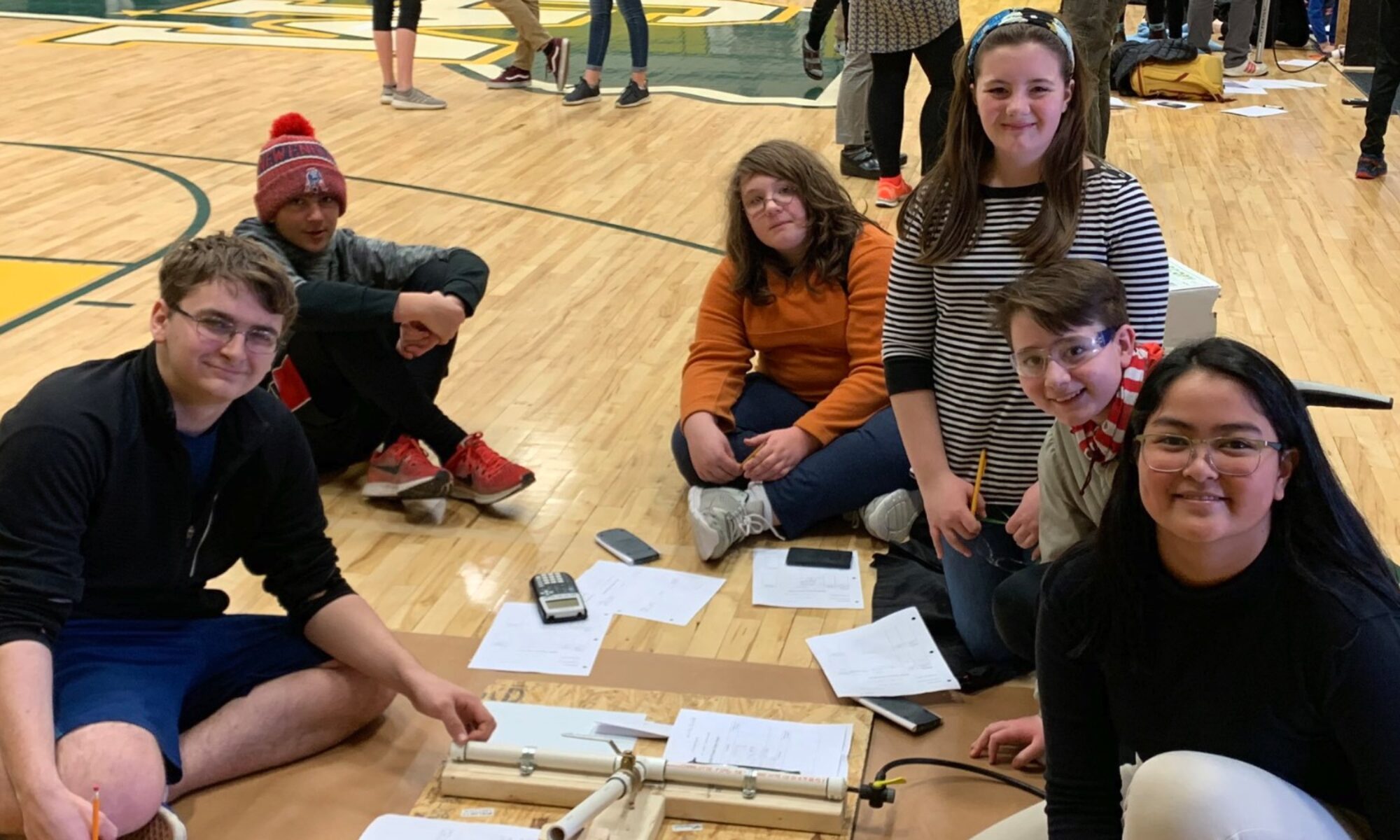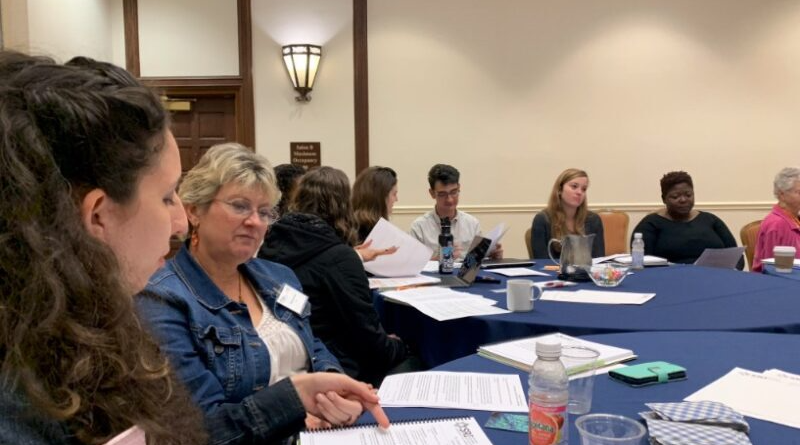So, maybe you’ve been using protocols at faculty meetings or professional learning community sessions. Perhaps you’ve found that they make space for all voices in conversations about proficiency-based education. Or you like how they foster collaboration as you work together to structure personalized learning plans. Know what else they can do? Support us as we have the toughest conversations of all: those focused on equity.
In fact, the mission of the School Reform Initiative, whose protocols and structures I use regularly, is all about equity.
First, let’s make sure we have a common meaning of equity.
The National Equity Project defines it this way:
Educational equity means that each child receives what he or she needs to develop to his or her full academic and social potential.
They go on to say that working towards equity means:
Ensuring equally high outcomes for all participants in our educational system; removing the predictability of success or failures that currently correlates with any social or cultural factor
Interrupting inequitable practices, examining biases, and creating inclusive multicultural school environments for adults and children
Discovering and cultivating the unique gifts, talents and interests that every human possesses.
Protocols, facilitated well, provide structure to do this crucial work. They are workhorses that help schools identify their shortcomings in creating structures that produce “high outcomes for all” students. A well thought out protocol session makes space for unearthing assumptions, uncovering biases, and exposing inequitable practices and policies. And protocols can help us fine-tune our work so that we are increasingly able to help every learner reach their full potential.
Let’s begin to explore some of the ways we can use protocols to create more equitable schools for all Vermont students. We’ll start by using structures to examine texts about equity.
Time for a disclaimer:
At the bottom of every School Reform Initiative protocol is written the following statement:

Facilitating a protocol is more than executing a series of steps. Sure, protocols look like recipes, but not everyone is a good cook! I encourage you to get trained in facilitation or work with a trained facilitator to select and use protocols well. Poorly facilitated protocol sessions can sour a faculty on protocols for good! And it is almost never the protocol’s fault, rather it is the result of sloppy or ill-conceived facilitation.
Interested in getting trained as a facilitator? Learn more here.
… and a word about fidelity.
When I train facilitators we often talk about facilitating with fidelity. New facilitators often take that to mean that they have to time each step to the second, be rigid about moving on, and control the entire process with precision. It often takes a lot of practice before their understanding deepens.
That word, “fidelity”, always takes me back to my days as an undergraduate when I took an art history course. Specifically, I think of the van Eyck painting “Arnolfini Wedding”, with its small dog in the foreground. That little pooch, according to my professor, symbolizes fidelity. When I facilitate I think of my own pup, Charlie!

He is loyal beyond a doubt, but he is not awfully obedient. He barks at strangers, would rather run to greet a friend then listen to my command to stay, and finds every opportunity to roll in stinky substances. And yet, he is my best hiking partner, my most devoted friend. He seems to know that his true purpose isn’t compliance or aesthetics, but love.
I am reminded, each time I facilitate with fidelity, to be like Charlie: to be faithful to the intentions of the protocol session first and foremost. While I follow each step (these structures are designed deliberately!), I sometimes add a little extra time if not everyone has had the opportunity to speak or I build in a little space for thinking. I remember why we are doing what we are doing and use the protocol to serve that purpose.
One more thing before we get started: NORMS!
Conversations about equity are challenging, and while the structure of a protocol helps, they only work when a group also has agreed on a way of behaving together. Shared norms or agreements help create a culture that can sustain difficult conversations. As Elena Aguilar says,
Norms cultivate trust and safety. They exist to prevent unhealthy conflict from mushrooming, to guide our behavior, and, most important, to help us do whatever it is we’ve decided to do as a team.
I’ve found the Four Agreements for Courageous Conversations to be especially effective at helping teams engage in equity work:
- Stay engaged
- Experience discomfort
- Speak your truth
- Expect and accept non-closure
This video is a great way to introduce these agreements and explore their deeper meaning. I generally add an additional agreement:
- Honor confidentiality
Vermont educator Rhiannon Kim has adapted these to create some amazing meeting norms for creating spaces for doing equity work. Whatever norms you use, take time to review them at the beginning of the meeting and debrief them at the end.
Using protocols to explore texts about equity
Using protocols to explore texts is a good place to start. They provide the structure many groups need to stay focused on a reading and to push us to deeper meaning-making. When paired with an equity-focused text, they can lead to a shared understanding and transform school practices.
The Text Rendering Protocol is a great entry point. Use it to examine a short piece to prime the pump on what equity even means in schools. Equity in Education: Where To Begin?, for example, can help a faculty build some common ground on the subject. At the end of the session you’ll have a list of phrases and words that seem especially important when considering this topic.
Protocols often ask us to slow down in order to learn from a text
The Four A’s Text Protocol is one of my very favorites because it encourages us to be aspirational. You might use it to discuss Equity Literacy for All with a group of colleagues. The protocol will ask you to identify the assumptions the author holds, find places of agreement, look for places you might argue with the author (or ask a question), and finally find something to aspire to or act upon. It’s a fabulous way to learn more about equity literacy and commit to some action.
Consider using the Making Meaning Protocol as a way to examine Best Practices for Serving LGBTQ Students. This structure will help you take time to understand the text and its significance before considering its implications for your school.
https://twitter.com/JPhillipsVT/status/1060581188845428736
Perhaps you are ready to discuss racial or class equity
Some Vermont educators have been reading Ali Michael’s What White Children Need to Know About Race. The Save the Last Word for Me protocol can allow educators to deepen their understanding of this challenging text while listening to other’s perspectives and sharing their own. I guarantee this article will spark new thinking! You can follow it up with a discussion of What is White Privilege, Really?, using the same protocol or trying out another one.
https://twitter.com/JPhillipsVT/status/890574283113680896
One of our most challenging jobs as educators is to interrogate our own biases. Paul Gorski’s piece Five Stereotypes About Poor Families and Education provides an opportunity to jumpstart that work. Using the Three Levels of Text Protocol can allow participants to explore the implications of his research to their own teaching practice.
Take your PLC to the next level
These same protocols could be used to discuss content focused articles like The Courage to Teach Hard History, Just Science, Seeing Themselves in Books, or Solving Problems Beyond Math Class in a professional learning community. The possibilities are endless! All you need is some time, attention, and a community to stretch your thinking.
Collaboration is a practice
As we strive to make Vermont schools more equitable places that provide rich opportunities for every learner, we need all of the help we can get. Protocols are a powerful tool for fostering the conversations that will help us get there. But, just like anything worth doing, they require practice! When we engage in facilitated dialogues with purpose and intention, we build our collective capacity to recognize and address inequities in action, one conversation at a time.



Thanks for sharing. Protocols support constructive yet difficult conversations .
They sure do! I’ve found them so useful in helping me identify my own biases and assumptions and in challenging me to expand my understanding.